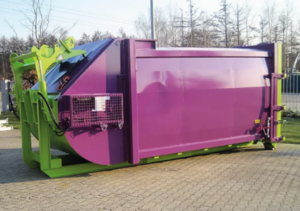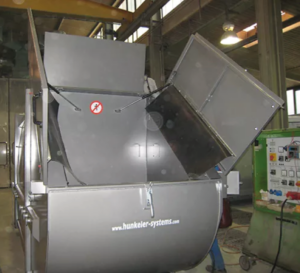Managing food waste is a pressing challenge for many businesses, particularly those in the food and hospitality industries. Overflowing bins, unpleasant odours, and hygiene issues are all too common in environments where large volumes of food waste build up. Whether it’s a small coffee shop or a bustling restaurant, improper management of this waste can have serious repercussions, which can include harm to the environment. This is where a reliable food compactor becomes an invaluable tool, transforming waste into a manageable resource while improving cleanliness and reducing costs.
Businesses that often turn to compactors are those overwhelmed by the sheer volume of food waste generated on their sites. Left unchecked, this waste can create unsanitary conditions, contribute to health risks, and lead to strong odours that are difficult to manage. From small-scale establishments like cafes and restaurants to large-scale events and festivals, the need for an effective food compactor is universal. Food compactors not only reduce waste volume but also address the unpleasant smells and hygiene concerns that often arise from wet and offensive waste.
When exploring which commercial food compactor might be the best fit for your needs, it’s worth noting the versatility and effectiveness of options like Ludden & Mennekes’ APK Skip Compactor. Capable of holding up to five tonnes of food waste, this model is designed with a rounded bottom to prevent liquid stagnation, which tends to be a concern when dealing with wet waste. Liquid that sits idle in compactors can quickly turn foul, producing odours that deter many potential users, especially those needing to cultivate a fresh and clean atmosphere on their premises. However, the APK’s innovative design ensures that waste remains fully contained and odour-free.
Another noteworthy feature of the APK is its fully sealed and heavy-duty rear discharge door. This construction ensures that no accidental spills occur during operation, and unauthorised access to the compactor is prevented. For added convenience, the APK can be loaded in several ways, whether by hand, bin lift, or tip skip, making it adaptable to various business settings. Its robust build eliminates the need for cleaning during operation, as all food waste is securely contained within the machine.
For those handling even larger volumes of waste, the same manufacturer has produced the RPK RoRo Compactor offers an impressive solution. With the capacity to hold between eight and twelve tonnes of waste, this compactor is ideal for businesses or events generating significant amounts of food waste. Like the APK, the RPK features a rounded bottom to prevent liquid stagnation and maintain hygiene. Additionally, its efficient design allows for a fast cycle time of just 35 seconds and a compaction force of 37 tonnes, making it a powerful option for high-demand environments.
One of the key advantages of the RPK is its low-maintenance design. Unlike some compactors that require frequent cleaning to remove built-up waste, the RPK eliminates this need entirely. By addressing common pain points such as liquid stagnation and waste build-up, it ensures smooth operation with minimal intervention, making it an excellent choice for larger-scale operations.
Choosing the right food waste processing equipment ultimately comes down to the specific needs of your business. For smaller establishments or those dealing with moderate amounts of waste, the APK Skip Compactor offers a practical and hygienic solution. On the other hand, larger facilities or events with higher waste output may find the RPK better suited to their requirements.
Investing in a reliable food waste compactor not only simplifies waste management but also contributes to a cleaner, more sustainable operation. By reducing waste volume, minimising odours, and ensuring hygienic handling, these machines play a crucial role in modern waste management strategies. For businesses looking to turn a problem into an opportunity, a high-quality food compactor is an essential tool.



